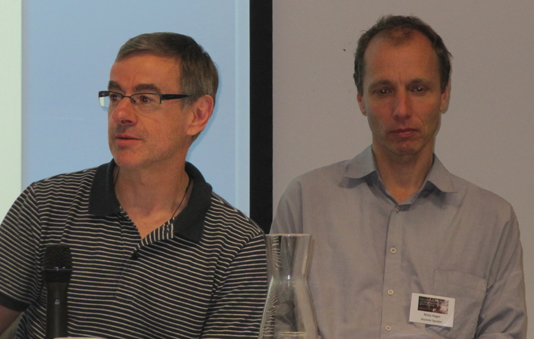
Hamish Fletcher
Collaboration between non-profit institutions and the mainstream media has breathed new life into investigative journalism, says Australian journalist and media academic Bill Birnbauer.
In his address at this weekend’s inaugural Media, Investigative Journalism and Technology conference, the senior lecturer at Monash University suggested developments in the United States illustrate the potential of partnerships with non-profit foundations.
For former Melbourne Age and Sunday Age journalist Birnbauer, while the outlook for the mainstream media remains “unrelentingly grim”, the support investigative reporting receives from non-profits has “reinvigorated” in-depth journalism in North America.
There are more than 60 centres in the US funded by philanthropic donations which conduct investigations into matters of public interest, he says.
According to Birnbauer, these centres received US$142 million to spend on investigative reporting between 2006 and 2009.
“There’s been nothing like this, the biggest centres employ 30-40 full-time reporters,” he told the conference, organised by AUT’s Pacific Media Centre.
“They have the one commodity which is so essential – time and the lack of daily deadlines.”
Wide audience
As well as being free from the constraints of traditional newsrooms, these centres can still reach a wide audience by using mainstream media to distribute their content.
“Iconic media such as the New York Times, Wall Street Journal and National Public Radio now run this stuff. Mainstream media want content and they can’t produce it themselves,” Birnbauer said.
“Last year, the Associated Press agreed to syndicate [these centres’] work to 1500 American newspapers. In other words, non-profits have moved into the mainstream.”
Part of why the mainstream is so willing to publish this content is the involvement of “serious journalists.”
Indeed, one of the foundations, Pro Publica is headed by editors who held senior positions with the New York Times and Wall Street Journal.
Although they are already a sizeable force, Birnbauer said the foundations are pooling their resources to improve the way they work.
Umbrella group
“In July last year, a handful of the US non-profits formed an umbrella group, the Investigative News Network. So these non-profits are becoming organised to co ordinate the editorial administrative and financial aspects of running centres,” he said.
However, while excited about the possibilities non-profits offer investigative journalism, Birnbauer said there were concerns about their editorial independence and whether “the foundations are the new advertisers.”
Another pressing issue was whether this model could operate in Australia and New Zealand.
Birnbauer suggested that given the lack of such centres in this part of the world, universities should take the place of non-profit foundations to bolster investigative journalism in Australasia.
“In every journalism school, there’s always a handful of people who want to do this stuff and they need to be nurtured and given the opportunity,” he said.
And rather than working in isolation, he proposed universities team up for a project dubbed “uni muckrackers”, which would produce trans-national investigative content that could be farmed out to commercial newsrooms.
Hamish Fletcher has recently completed a Post-Graduate Diploma in Communication Studies at AUT University. He is a member of the PMC Media group covering the conference.



